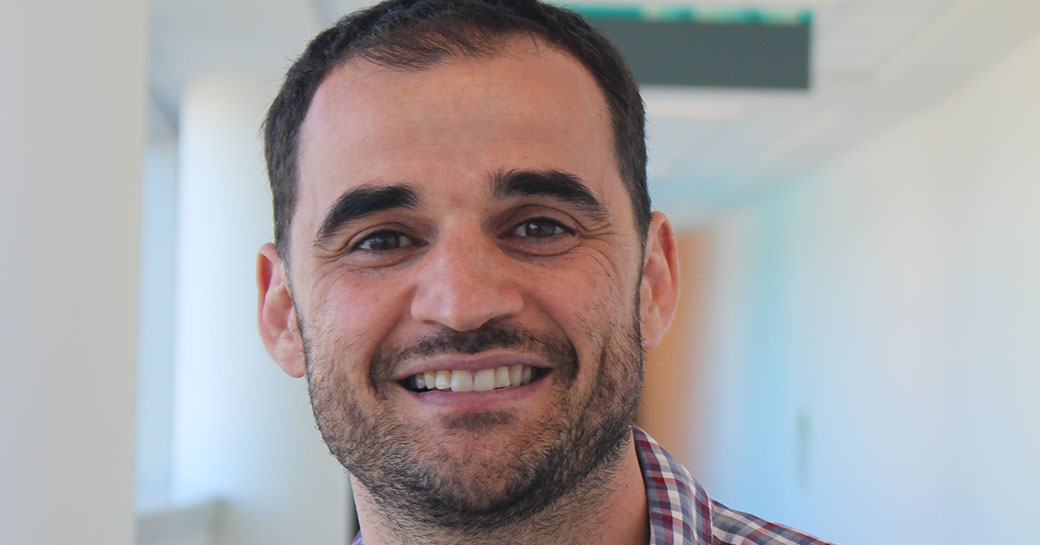The Children’s during the pandemic
Friday, May 22, 2020

Interview with Frédéric De Civita, Associate Director of Multidisciplinary Services and Support Programs, Montreal Children's Hospital
Faced with the challenges of COVID-19, how has the Children’s prepared to maintain services for kids and their families? When did you start planning?
In February before the pandemic began to make its way through the province, our teams were in constant contact with senior leadership from the Children’s, as well as our adult counterparts within the McGill University Health Centre (MUHC) and the Ministry of Health and Social Services (MHSS).
This constant communication and sharing of information allowed us to enact immediate measures to keep our patients, families, and staff members safe. This meant canceling all volunteer visits and limiting visitors to only one or two parents or caregivers per child. It also meant putting all elective surgeries and clinic visits on hold and collaborating with these teams to ensure that urgent care continued to be delivered quickly and safely. In an effort to continue to offer follow-ups, we worked quickly to develop videoconferencing capabilities so our families could avoid having to come into the hospital whenever possible. All these collective measures ensured we could increase the hospital’s capacity to respond to the crisis, all while maintaining essential services to our patients.
How did you have to adjust? What are the main strategies for continuing to treat patients?
This was a two-step process: first, we put in place a coordination and mechanism structure and, secondly, a taskforce for moving forward.
Our structure de commandement ensured fluidity in conjunction with the MUHC’s Emergency Measures Coordination Centre (EMCC) through daily Montreal Children Hospital ‘Huddles’ with unit managers and senior leadership to improve communications with our teams.
The second step was creating a taskforce to implement the surge and adapted capacity action plan that was developed in response to the crisis. These initiatives included reconfiguring the physical layout of the hospital to include:
- hot and cold zones and to respond to the new patient pathways that had been installed;
- a triage system was installed at hospital entrances and in clinics to identify symptomatic patients and family members;
- our clinics identified appointments that could be safely postponed to a later date and an ongoing triage system to highlight referrals and assess their urgency;
- maintaining contact and communications with our patients via teleconsultations while also ensuring clear communications to internal and external audiences to explain important announcements and decisions.
How does the hospital keep young patients, their families and the staff safe?
The surge and capacity plan not only helped to instil new measures to ensure the safety of our patients on-site, but it also allowed us to identify patients we could treat virtually. This resulted in thousands of videoconference appointments with our patients.
To protect our staff and personnel, we created an equipment protection process to ensure necessary availabilities of PPE and proactive contingency plans for it. Educating and training on how to don and doff was important. We made sure to update messaging in response to real-time developments, including reviewing safety protocols.
What role did team collaboration play during this crisis?
Collaboration is already part of the Children’s DNA and this pandemic with its daily, ever-changing scenario of urgent needs only embedded that notion further.
Our staff, whether they be RTs, Nursing, Allied Health or another unit, stepped up and out of their comfort zones to perform in support of this new reality, from performing triage at the entrances or in-patient units, caring for adults who came over from the Royal Victoria Hospital or by volunteering to go to the CHSLDs. The new reality of social distancing and virtual appointments may have provided initial concern, but the response was the promotion of better collaboration that unified us even more.
Adapted capacity also allowed us to extend our partnership and friendship with the Shriners, which quickly accepted to help with patients. And our communications team was essential in relaying important messages internally and externally, using the Facebook Live platform with our infectious diseases experts answering parents and patients’ questions, or through media appearances from the likes of our Psychiatry head Dr. Martin Gignac on the mental anxieties and stress ahead of the return to school. Public Relations and Communications ensured all information remained up to date and relevant, providing guidelines for the ever-evolving situation.
How did this time of uncertainty affect the Children’s staff and how did they keep their spirits up?
There was certainly anxiety and stress, so it was important to provide means to tools so no one felt forgotten. Our confidential Employee Assistance Program provided counselling, but we then went a step further to create a Psychosocial support line focused on the present, changing situation. Our usual Schwartz Rounds – an informal group talk that allows staff to discuss feelings and difficult situations openly and confidentially – was especially important for creating understanding and camaraderie. The Quality of Life team crafted positive, morale-boosting initiatives. And the incredible support of our donors was crucial, through initiatives like the Pediatric Emergency Mental Health Fund, providing the necessary equipment for our emergencies and Mental Health sectors, and free meals to the staff to keep them well-fed and healthy.
What’s the next step for the hospital?
We want to continue offering a safe environment to our patients while adapting our way of working to the “new now” since COVID is a reality that will have an impact for the foreseeable future. Now we must plan how to ensure accessibility of care, slowly increase our activities, and continue to review the needs going forward. This will include physical layouts inside the hospital to respect social distancing, our coordination of care, and an emphasis on videoconferencing appointments, if necessary. We need to increase the capacity of our technologies to care for patients from home and to efficiently manage our waiting lists, so our kids get the best care possible.